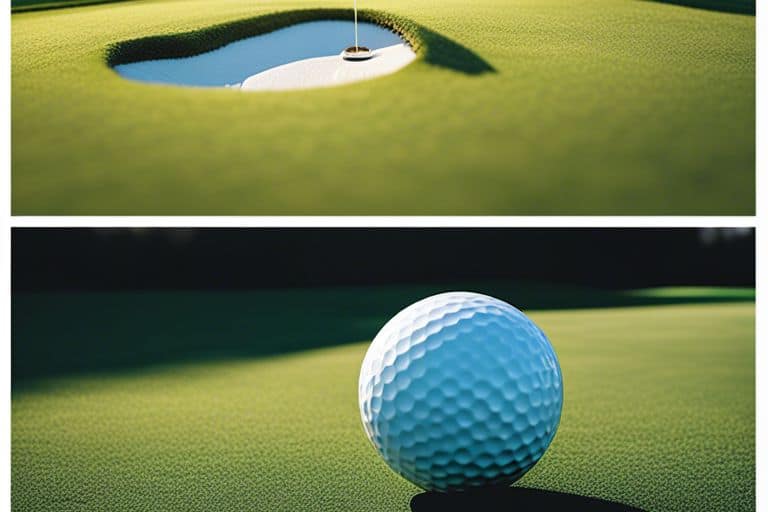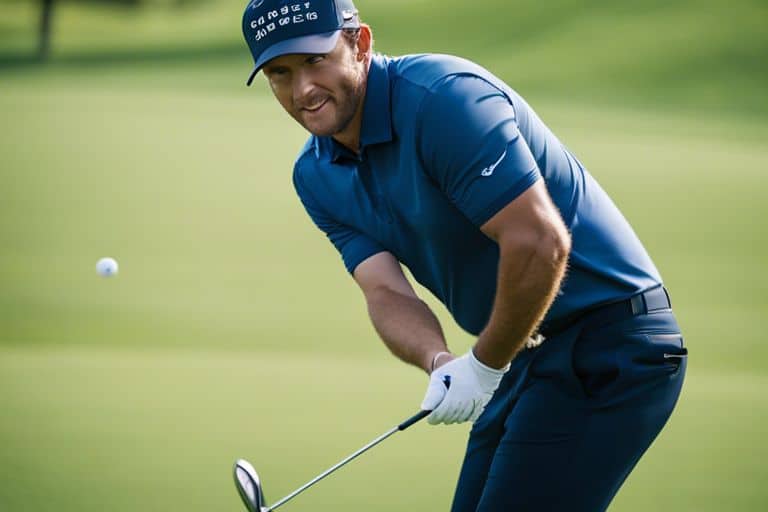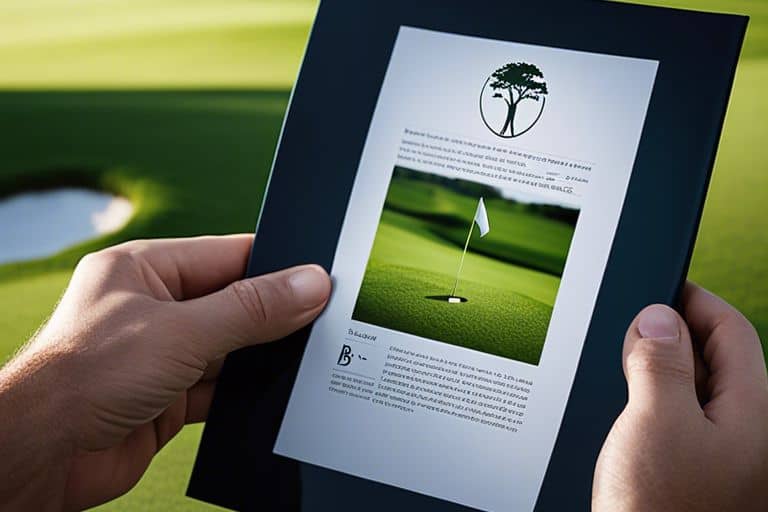How do you hit a "flop and drop" shot in golf?
Indubitably, mastering the “flop and drop” shot in golf can be a game-changer on the course. It requires finesse, precision, and a high level of skill. When faced with a tricky lie or a tight pin, this shot can come in handy to save par or even score a birdie. In this blog post, I will share some essential tips and techniques to help you become proficient in executing this challenging yet rewarding shot.
Fundamentals of the Flop and Drop
The flop and drop shot is a valuable technique to have in your golfing arsenal. It can help you get out of tricky situations, such as when the ball is stuck in thick rough or close to the green with little space to work with. To successfully execute this shot, it’s important to understand the fundamentals and practice them regularly.
Proper Stance and Posture
When setting up for a flop and drop shot, it’s crucial to have the correct stance and posture. I typically stand with my feet slightly wider than shoulder-width apart, with the ball positioned forward in my stance. I also lean slightly towards my leading foot, which helps me to achieve a steeper angle of attack. Keeping a relaxed but firm grip on the club and maintaining good posture throughout the swing is essential for a successful shot.
Choosing the Right Club
Choosing the right club is another crucial aspect of the flop and drop shot. I often opt for a higher lofted wedge, such as a sand wedge or a lob wedge, to get the height and soft landing I need for this shot. The club selection will depend on the distance to the pin, the lie of the ball, and the trajectory required. It’s important to practice with different clubs to develop a feel for how they perform in different situations.
I hope you found these tips helpful for mastering the fundamentals of the flop and drop shot. In the next chapter, I’ll delve into the technique and execution of this advanced golf shot. Stay tuned for more valuable insights!
The Technique Behind the Shot
Assuming you have the right club in your hand, hitting a successful flop and drop shot in golf requires a combination of technique, feel, and precision. In this chapter, I will delve into the specific techniques and mechanics behind executing this challenging shot.
Swing Mechanics for the Flop and Drop
When it comes to the swing mechanics for the flop and drop shot, the key is to generate a high, soft-landing shot with minimal roll. To achieve this, the clubface should be open at address to add loft to the shot. As you swing, it’s crucial to maintain a smooth and accelerating swing tempo to generate enough height and distance without sacrificing control. Additionally, keeping your hands ahead of the clubhead through impact will help ensure a clean strike and maximize spin, aiding in stopping the ball quickly on the green.
Controlling Distance and Trajectory
Controlling distance and trajectory when executing a flop and drop shot is essential for success. To hit a high, soft-landing shot, focus on the rhythm and feel of the swing rather than trying to force the shot. It’s important to vary the length of your backswing to control the distance, as well as adjust the speed of your swing to alter the trajectory of the ball. Utilizing the bounce of the club to interact with the turf will also help in controlling the flight and landing of the ball, allowing for a delicate touch around the green.

Mastering the Shot
Lastly, mastering the flop and drop shot requires consistent practice and a deep understanding of the technique. It’s important to commit to learning and refining this shot, as it can greatly improve your game and help you navigate tough lies on the course. When you’re confident in your ability to execute this shot effectively, you can approach the ball with a sense of control and precision that will ultimately lead to better scores.
Practice Drills for Perfection
To perfect the flop and drop shot, I recommend focusing on your short game and spending extra time around the green. Practice hitting high, soft-landing shots with various clubs from different lies. Try setting up challenging scenarios for yourself, such as hitting over obstacles or landing the ball close to the pin from different distances. Additionally, spending time in the practice bunker can help you develop a feel for hitting the ball cleanly and softly out of challenging lies.
Common Mistakes and How to Avoid Them
One common mistake when hitting a flop and drop shot is overthinking the shot. It’s important to trust your technique and commit to the shot with confidence. Another mistake is trying to scoop the ball in the air, which can lead to inconsistent contact. Instead, focus on making clean, crisp contact with the ball to achieve the desired trajectory and spin. Lastly, misjudging the distance and trajectory of the shot can lead to poor execution. It’s essential to practice and develop a feel for how far the ball will carry and how it will react once it lands on the green.

Advanced Tips and Tricks
After mastering the basics of the flop and drop shot, there are a few advanced tips and tricks that can help elevate your game to the next level. Below are some key points to keep in mind as you continue to practice and refine your skills:
- Club Selection: When hitting a flop and drop shot, it’s important to choose the right club for the job. Generally, a lob wedge or sand wedge is ideal for this type of shot, as it provides the necessary loft to get the ball up and over obstacles while still allowing for a soft landing.
- Ball Position: Adjusting the position of the ball in your stance can have a significant impact on the trajectory and distance of your flop and drop shot. Experiment with different ball positions to find the optimal setup for your swing.
- Shot Selection: Consider the lie of the ball and the surrounding terrain before attempting a flop and drop shot. It’s crucial to assess the situation and choose the right shot for the job, whether it’s a high, soft lob or a lower, more controlled pitch.
Playing from Different Lies
When faced with different lies on the course, the approach to hitting a flop and drop shot may need to be adjusted. For instance, if the ball is sitting in deep rough or a tight lie, I recommend using a more aggressive swing and focusing on making clean contact with the ball to generate the necessary lift and spin. On the other hand, when playing from a fairway lie, you may need to dial back the power and focus on executing a controlled, precise shot to get the ball close to the target.
Adjusting to Weather Conditions
Weather conditions can also play a significant role in how you approach the flop and drop shot. In windy conditions, for example, it’s important to account for the effect of the wind on the trajectory and distance of the shot. You may need to adjust your aim and club selection to compensate for the wind. Similarly, in damp or rainy conditions, the ball may not spin as much, requiring you to make adjustments to your technique and shot selection to achieve the desired outcome.

Summing up ‘How do you hit a “flop and drop” shot in golf?
In conclusion, mastering the “flop and drop” shot in golf requires skill, precision, and confidence. By opening up the club face, taking a wider stance, and using a more exaggerated swing, you can effectively execute this difficult but impressive shot.
It may take time and practice to perfect, but once you’ve got it down, it can be a valuable tool in your golf game, particularly when faced with challenging lies and tight pin positions. Keep practicing and experimenting with different techniques to find what works best for you, and soon you’ll be confidently hitting “flop and drop” shots like a pro.






